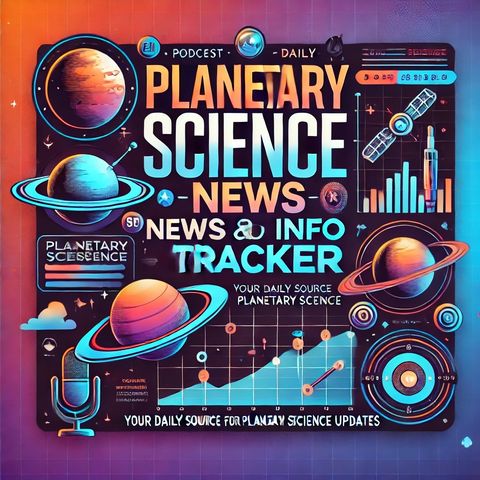Discover the Solar System's Spooky Wonders: A Celestial Halloween Exploration

Download and listen anywhere
Download your favorite episodes and enjoy them, wherever you are! Sign up or log in now to access offline listening.
Discover the Solar System's Spooky Wonders: A Celestial Halloween Exploration
This is an automatically generated transcript. Please note that complete accuracy is not guaranteed.
Description
Astrogeology Explores the Solar System’s Halloween Spirit As Halloween approaches, the Solar System unveils its own eerie trick-or-treat surprises. From ghostly moons to mysterious cosmic phenomena, the celestial wonders offer...
show moreAs Halloween approaches, the Solar System unveils its own eerie trick-or-treat surprises. From ghostly moons to mysterious cosmic phenomena, the celestial wonders offer a fascinating glimpse into their charms and mysteries.
Mars, aptly nicknamed the "Red Planet," offers its own array of Halloween-themed spectacles. One of its moons, Phobos, is named after the Greek god of fear and brings to mind a classic Halloween fright due to its tumultuous surface. Covered in impact craters and linear markings, Phobos seems to embody the spirit of fear it represents, reminding us of an oversized spooky asteroid roaming close to Mars.
Turning our attention to Jupiter, this gas giant harbors an atmospheric phenomenon that appears otherworldly. The swirling Great Red Spot, a colossal storm larger than Earth, could easily be mistaken for a cosmic eye watching over the Solar System. Its reddish hue adds to the Halloween-themed vibe, serving as a reminder of nature’s power and mystery.
Our own Moon casts its glow over many Halloween nights, but not many are aware that the Moon’s surface contains its own share of ghostly echoes. The existence of lunar "mascons," or mass concentrations, shows that beneath the Moon's surface lie dense regions that disrupt its gravitational pull, creating a gravitational field eerily out of sync with the vast lunar maria.
A more jovial Halloween treat is the vibrant rings of Saturn. Its rings, primarily composed of ice particles with traces of rocky debris, reflect sunlight and create a spectacular, if not hauntingly beautiful, sight. This otherworldly yet inviting display is always a feast for the celestial eye, appearing both mysterious and majestic.
Venturing further into the Solar System, Uranus presents its own celestial trick. Unlike other planets, it rotates on its side, likely due to a colossal collision with an Earth-sized object in the distant past. This peculiar tilt results in extreme seasonal variations, making it a planet of tricks with its ever-changing and unpredictable environment.
Pluto, though no longer considered a major planet, still plays a role in our Halloween tour of the Solar System. With its icy heart-shaped glacier, known as Sputnik Planitia, Pluto offers a contrast between its cold exterior and its intriguing and multifaceted surface, much like the tale of a misunderstood monster with a heart of gold.
In this cosmic context, even black holes can be seen as part of the Halloween narrative. These astronomical mysteries remind us of the dark unknowns in our universe, as they devour light and matter alike, echoing the theme of hidden dangers and the unseen forces of nature.
As we marvel at the beauty and mystique of the Solar System, it’s clear that Halloween’s spirit of intrigue and wonder extends far beyond our earthly realm. Each celestial body, with its unique features, adds to this cosmic narrative, blending science with the supernatural and inviting us to explore the Solar System’s enchanting dance of tricks and treats.
Information
| Author | QP-4 |
| Organization | William Corbin |
| Website | - |
| Tags |
Copyright 2024 - Spreaker Inc. an iHeartMedia Company

Comments